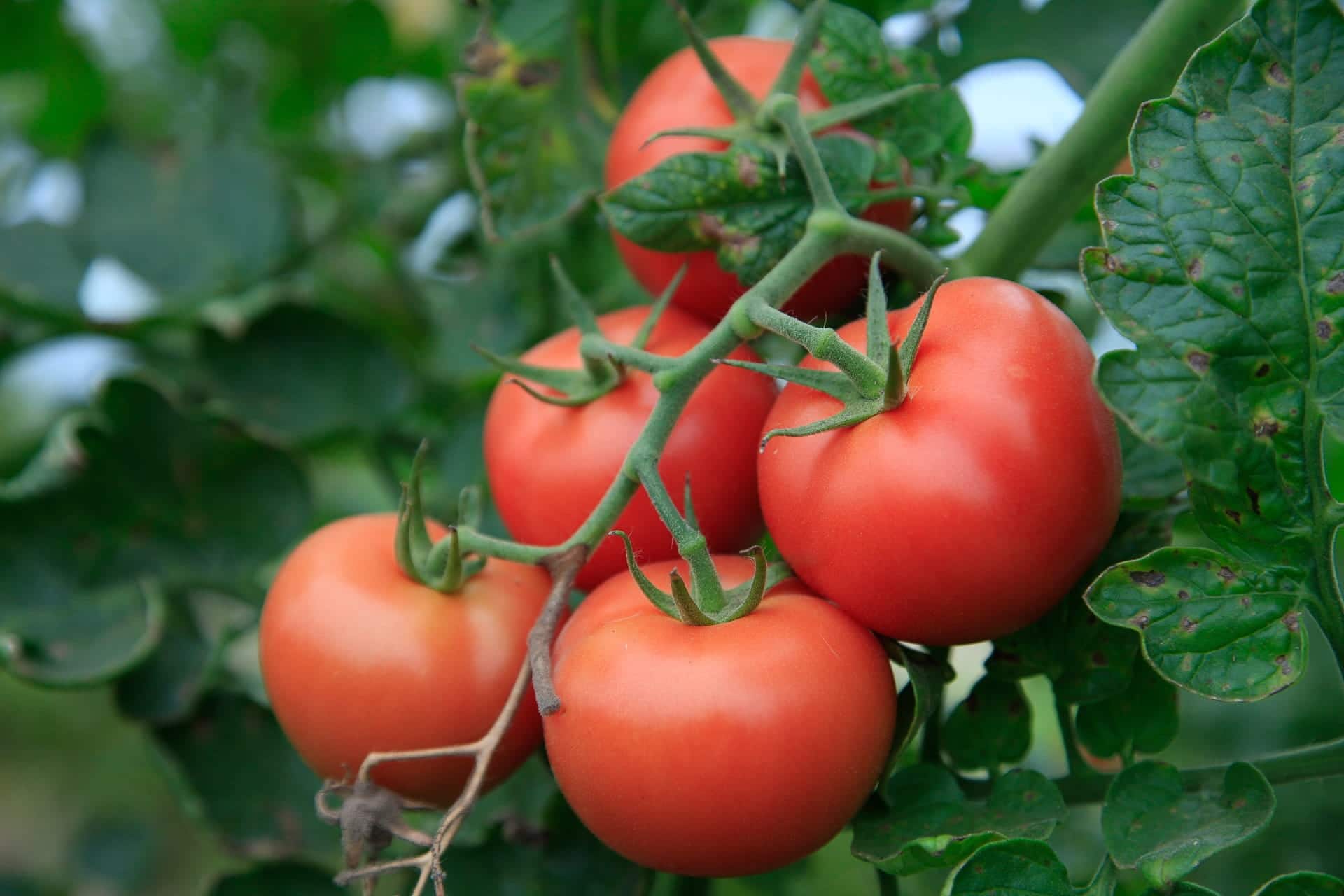If you want to know how to grow tomatoes in Colorado, this article will get you off on the right path. Growing tomatoes in Colorado’s erratic climate can be a challenge. However, with adequate preparation, gardening in the Centennial State can be a rewarding experience.
When Should You Plant Tomatoes in Colorado?
The best time to plant your tomatoes is after the danger of frost. During this time, temperatures should be in the low to mid-40s at nighttime and at least above 50 during the day. Cooler temperatures during the daytime can hamper the growth of your tomato plants and reduce yield.

Many gardeners in Colorado use greenhouses to extend the growing season. They also use it to protect the plants from cold winds and temperature drops.
Which Tomatoes Grow Best in Colorado?
While it’s challenging to grow tomatoes in Colorado, some varieties thrive well in the area. Some of the tomatoes you should consider planting in Colorado include hybrid tomatoes and heirloom tomatoes.
Hybrid tomatoes are full of flavor and highly resistant to common tomato diseases. On the other hand, heirloom tomatoes have great flavor, but they’re more prone to catching certain plant diseases.
For early-season planting, try other types such as Stupice, Early Girl, and Fourth of July. If you’re looking for great choices for mid-season planting, try Ace and Champion. If you’re a big fan of cherry tomatoes, try Super Sweet 100s and Sun Gold.
What are the Tips on How to Grow Tomatoes in Colorado?
Tomatoes need fertile soil, water, fertilizer, and sunlight to grow and yield fruit. Whether you’re planting tomatoes for the first time or you’ve been doing it for years, here are tips you should remember.
Sunny Location
Your tomato plants should have access to sunlight for at least six hours a day. You should also plant them in warm, fertile soil.
Time
As mentioned, plant your tomatoes after the last frost.
Plant Deep in the Soil
Plant your tomatoes deep in the ground. Till the soil to a depth of 8 to 12 inches to provide room for roots to grow. You can loosen heavy soil by adding compost or manure. This improves the texture and drainage of your plants.
Water Regularly
Make sure to water your plants regularly. If you miss a week and make up for it by overwatering, the fruits will crack.
Plant Maintenance
To keep your plant healthy, remove weeds as well as the lower leaves. When the leaves closest to the ground turn yellow, removing them will prevent diseases. It will also improve air circulation.
What is Colorado’s Growing Zone?
Although Colorado’s USDA zone falls within Zone 3a to Zone 7a, Colorado temperatures may still vary. For example, even if you fall under zone 6a, the temperature could still go lower than the average noted temperature.
If you start planting 6a plants, make sure to keep them protected. Otherwise, there could be winter die back and your plants may suffer from it.
Colorado gardeners need to know their zones because it determines the winter hardiness. This is one of the most important factors in ensuring plant survival. Additionally, gardeners should take into account the high winds, scorching heat, poor soils, and cold winters.
To grow tomatoes and other vegetables in Colorado, make sure to check seed packets and nursery catalogs. This ensures that you’re growing plants that thrive in your zone. You can grow healthy vegetables with enough sun exposure, healthy soil, regular watering, and companion planting.
What Type of Vegetables Grow Well in Colorado?
Once you know your zone, you’ll have a better understanding of which plants grow best in your area. While you’ll face certain limitations when growing vegetables in Colorado, several fruits and vegetables grow well in the area.
It’s best to start planting your seeds indoors. This allows you to hasten the harvest and extend the growing season regardless of Colorado’s cooler climate. Some of the vegetables you can grow during cooler seasons include beets, cabbage, kale, broccoli, carrots, Brussel sprouts, leeks, chard, cauliflower, peas, onions, parsley, spinach, potatoes, and radishes.
On the other hand, warm-season vegetables include beans, corn, eggplant, peppers, tomatoes, squash, melons, and cucumbers.
Why Should You Consider Growing Tomatoes in Greenhouses?
Growing tomatoes in greenhouses are worth the investment because gardening in Colorado can be challenging, especially during spring when temperatures vary. For this reason, gardeners must grow vegetables in a greenhouse. This protects your plants from harsh weather conditions, as well as prevent pests and diseases from destroying your plants.
By controlling the climate and caring for the soil, you can easily grow tomatoes in a greenhouse throughout the year. Aside from the fact that a greenhouse allows your plants to have longer growing seasons, it also helps you plant more vegetables, increases your production, and provides protection from seasonal pests and diseases.
The Bottom Line
Greenhouses may need a significant investment, but benefits you get from setting up your own greenhouse easily outweigh the cost. Healthier plants, higher yields, and longer growing seasons are just some of the many benefits you get to enjoy.
Now that you know how to grow tomatoes in Colorado, the next thing you need to do is to invest in a greenhouse. If you’re looking for high-quality and affordable greenhouses in Colorado, check out Krostrade. Our greenhouses are made from quality materials and they’re able to withstand harsh weather conditions.
